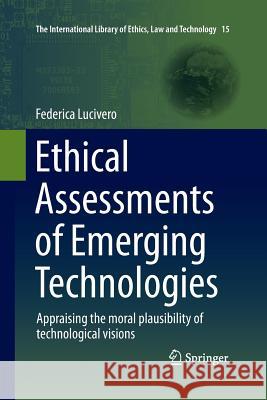Ethical Assessments of Emerging Technologies: Appraising the Moral Plausibility of Technological Visions » książka
topmenu
Ethical Assessments of Emerging Technologies: Appraising the Moral Plausibility of Technological Visions
ISBN-13: 9783319353296 / Angielski / Miękka / 2016 / 202 str.
Ethical Assessments of Emerging Technologies: Appraising the Moral Plausibility of Technological Visions
ISBN-13: 9783319353296 / Angielski / Miękka / 2016 / 202 str.
cena 195,42 zł
(netto: 186,11 VAT: 5%)
Najniższa cena z 30 dni: 192,74 zł
(netto: 186,11 VAT: 5%)
Najniższa cena z 30 dni: 192,74 zł
Termin realizacji zamówienia:
ok. 20 dni roboczych.
ok. 20 dni roboczych.
Darmowa dostawa!
Kategorie BISAC:
Wydawca:
Springer
Seria wydawnicza:
Język:
Angielski
ISBN-13:
9783319353296
Rok wydania:
2016
Wydanie:
Softcover Repri
Ilość stron:
202
Waga:
0.32 kg
Wymiary:
23.39 x 15.6 x 1.19
Oprawa:
Miękka
Wolumenów:
01











